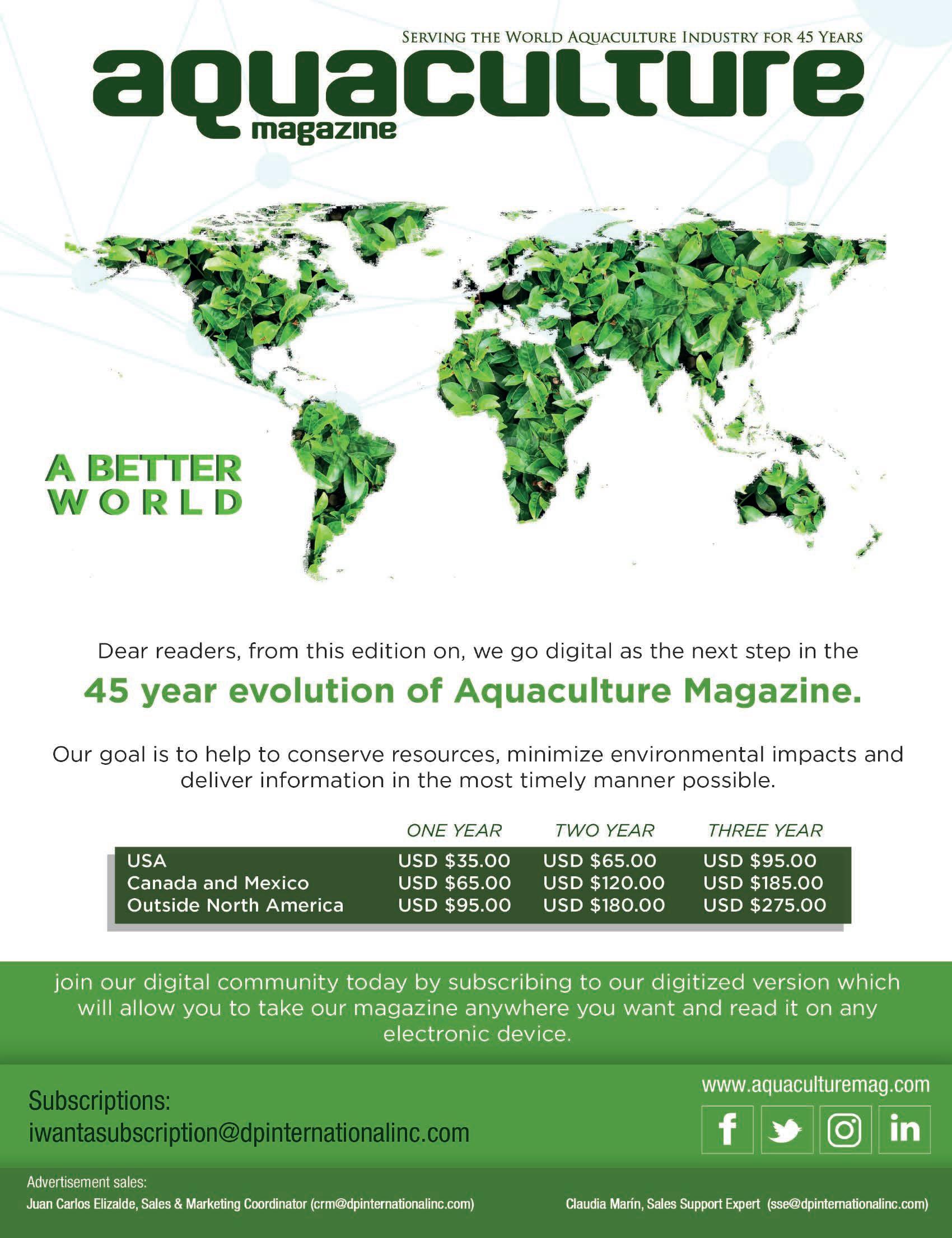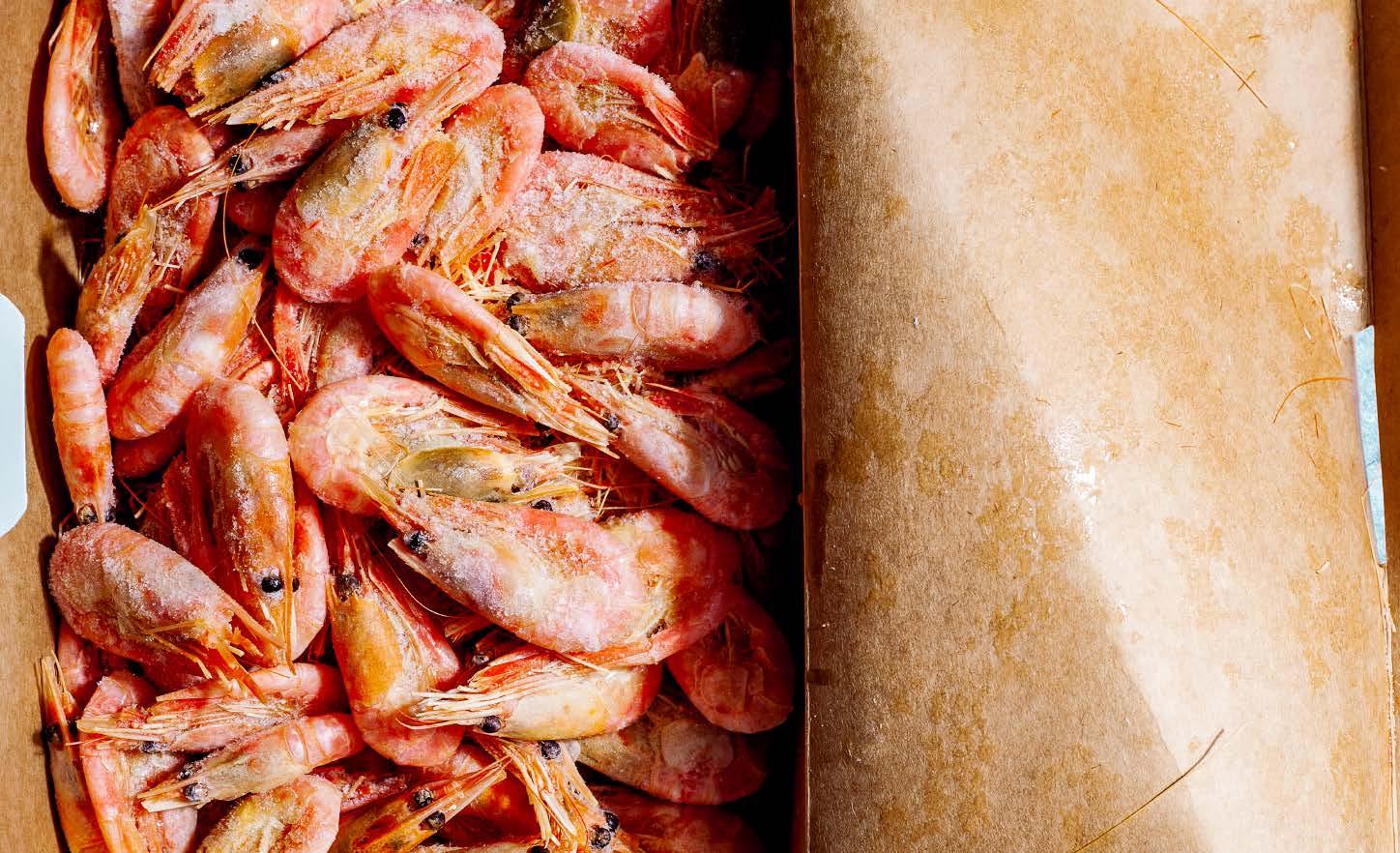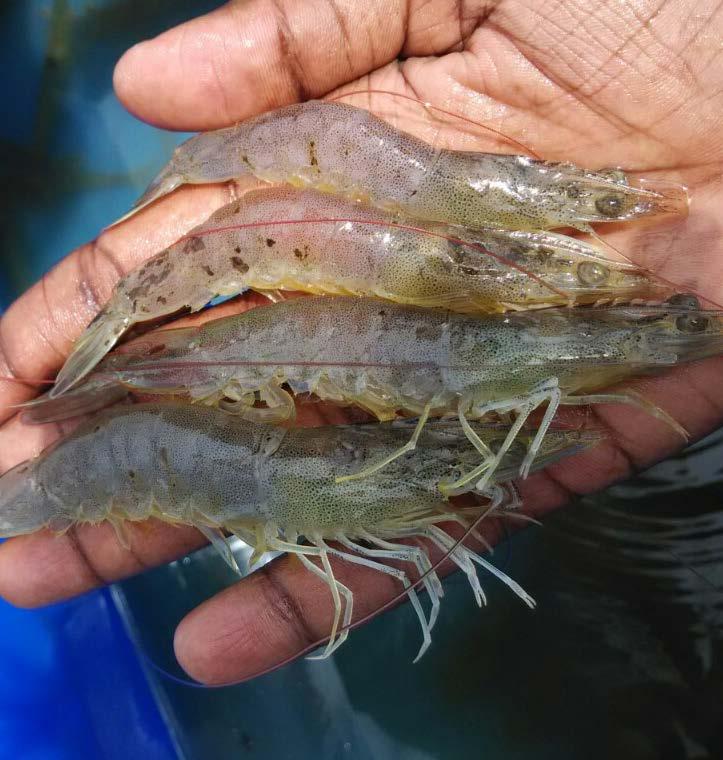
9 minute read
High levels of biosecurity are critical for sustainable shrimp farming
By: Ph.D Stephen G. Newman*
Consumers are being sold on systems that might deal with some aspects of sustainability, i.e., water quality and quality of the production environment, but that do not deal with the movement of pathogens between populations. So, at the risk of being repetitive, what is the definition of biosecurity, what does complying entail, and what are the real-world benefits going to be?
Biosecurity is essential for sustainability. Yet, as I have wandered the planet, working with farmers in dozens of countries, what I have found is that the term biosecurity has essentially become an empty term devoid of meaning.
Much as the terms sustainability, eco, green, etcetera have. They are used for marketing purposes with the leeway that marketing allows in terms of claims, etc.
I tell farmers at every opportunity that they have to take personal responsibility. They cannot expect that they will be protected in any other way.
Knowing what needs to be done and should be done is a powerful tool. Expecting that others will be looking out for you is unfortunately naive and at the root of most of the problems that plague shrimp farmers everywhere.
What would the reader think, though, if I told them that I am not aware of any third-party audits (I am open to learning that I am missing something) that claim their system is the path to true sustainability that includes biosecurity?
One does not need to look very far to see what I mean. The constant and consistent introduction of new diseases and the spread of existing endemic diseases should tell those who rely on this as a marketing tool that something is not quite right here.
Consumers are being sold on systems that might deal with some aspects of sustainability, i.e., water quality and quality of the production environment, but that do not deal with the movement of pathogens between populations. So, at the risk of being repetitive, what is the definition of biosecurity, what does complying entail, and what are the real-world benefits going to be?
Disease is a result of interactions between the environment, the pathogen, and the host.
The interplay between these is what determines, if a pathogen is present, what impact it will have. Susceptibility is variable and may include environmental perturbations that cause stress and disturb the balance resulting in animals that are weakened and make them more susceptible to disease.
The consistent problems being reported with diseases such as white feces (no one has yet to publish that the pathogen has been identified in a peer reviewed journal although some claim that they have identified it), and Enterocytozoon hepatopenai (EHP) (which ironically came from a purported nucleus breeding center) demonstrate this beyond any doubt.
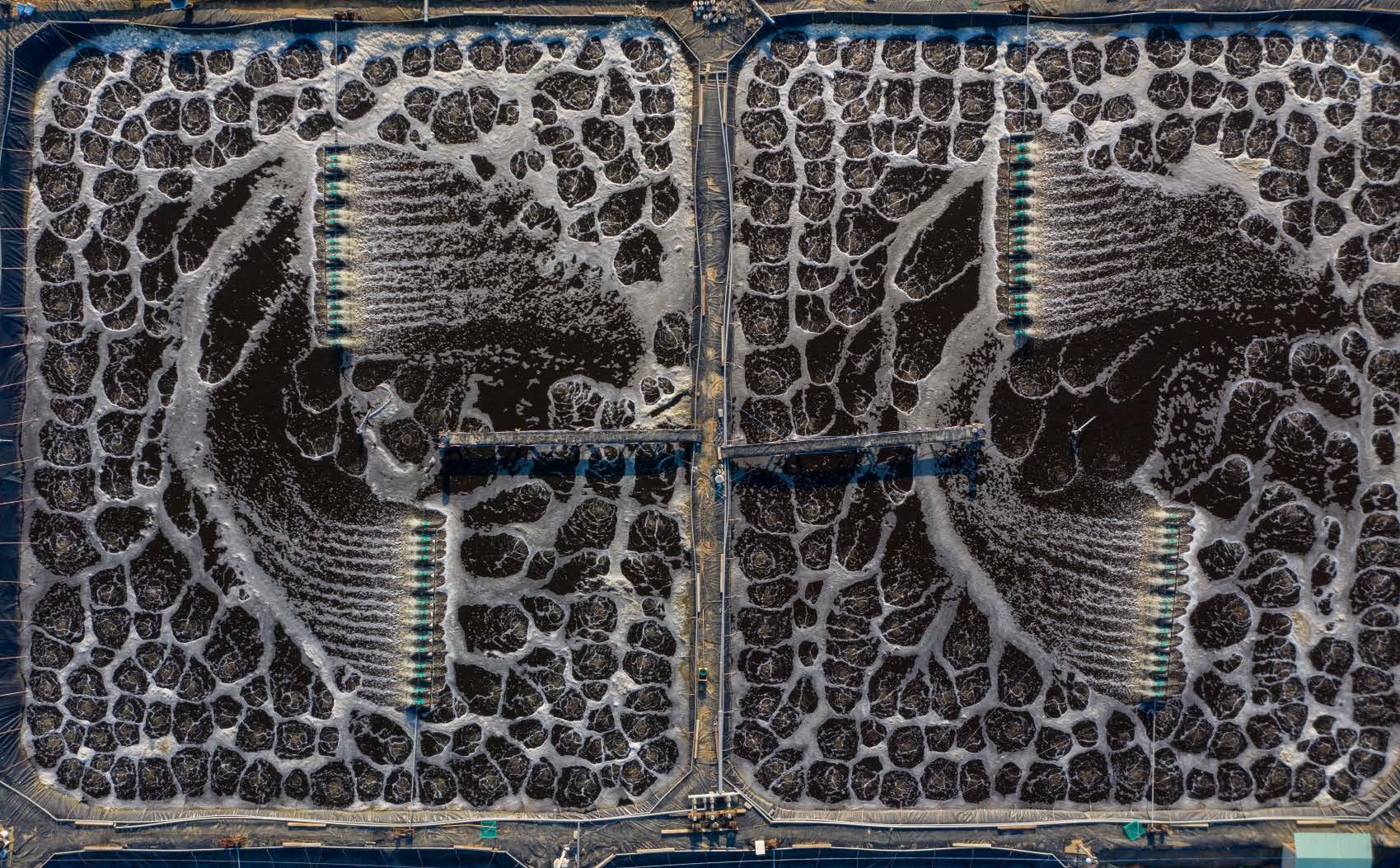
As I have written in prior articles, for shrimp farming to offer the level of biosecurity that it must for it to become sustainable, there will have to be a change in how business is conducted.
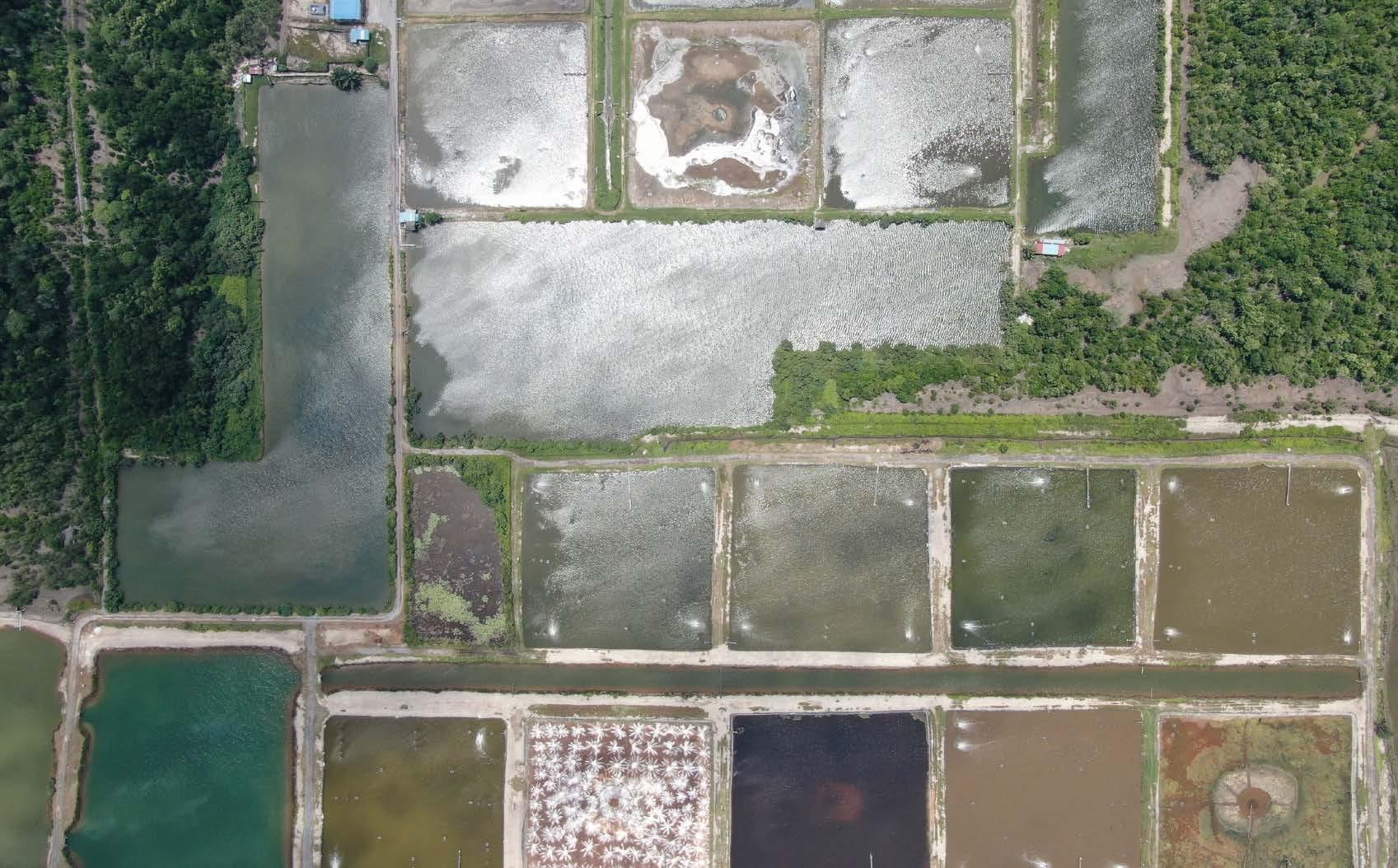
- They must be constructed to prevent the introduction of pathogens from all possible avenues.
- Each unit must have positive airflow that prevents airborne pathogens from entering.
- Each unit must be isolated in the sense that any problems are contained to that unit and cannot be spread because of commonalities (water source, staff, etc.).
- No live feeds can be used for the broodstock. While these may be irradiated or treated in some other manner, this is not a guarantee that no pathogens cannot be present.
- When animals are first brought in, they must be tested INDIVIDUALLY for all known pathogens, not just those that the OIE requires.
- This requires ensuring that one has the primers available not only for the known pathogens but also for those that are being looked at by academia, private researchers, etc.
- These animals are held in quarantine in a facility with no possible way short of deliberate sabotage of any airborne, waterborne, feed borne pathogen entering the system.
- Anything positive is destroyed immediately. Animals are tested repeatedly throughout the one year period that they are being held.
- Any dead or dying animals are tested and must be examined closely by board-certified histopathologists for telltale traces of pathogens.
- When animals are spawned, it must be done in a manner that is consistent with following the PLs from each female as a separate group.
- Adults need to be surface disinfected prior to spawning, eggs collected and washed and disinfected, followed by the nauplii.
- These animals will form the basis of your founding families.
- As with the animals that one started with, those animals that are the ongoing source of PLs need to be tested individually as well.
- If this is done, then you are not operating a NBC. Statistically, using the current criteria published in the AFS Bluebook for determining sample sizes ignores one critical point.
- The only way to be sure that pathogens are not present is to test everything.
- Even a 1% chance is not acceptable for animals in a NBC.
- Once these animals are adults and ready to spawn they can be considered to be truly free of all pathogens (APF).
- The term specific pathogen-free (SPF) is not applicable if one’s testing is limited to certain pathogens and population subsamples and not all of those for which primers are available, then you are not operating a NBC.
- No animals can ever be brought into the facility unless they come from another NBC and are transported in a manner that is consistent with ensuring this.
Far too many companies offering animals that they claim to be from NBCs are not offering clean animals. The moment an animal is exposed to an external open environment (water from any other source but the NBC), movement in open containers with air coming from outside, etc. they cannot be considered to be from a NBC. Regardless of what testing says etc., they can no longer be considered to be equivalent from a biosecurity standpoint.
Genics Pty. Ltd. (https://www. genics.com.au), an Australian company, has taken the lead in bringing this technology to the average shrimp farmer. The subject of a previous article, they have been able to reduce the cost to well under what conventional PCR testing companies are charging.
It does take specialized equipment, which is much more costly than the equipment required for conventional PCR. Yet even with this, given enough testing and minimal sample pooling, the cost of testing against the OIE pathogens, as well as the many other characterized pathogens is such that individual broodstock can be tested for under $50 each, and pooled samples (depending on how many animals are in the pool) for $25 or less.

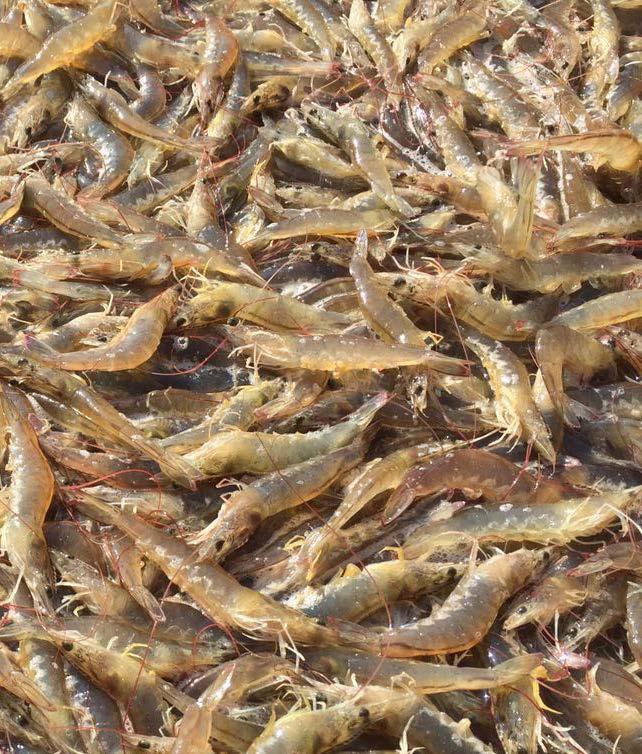
I can also tell you, that based on my experience, there will be no simple solutions, no sliver or magic bullets.
Eliminating pathogens both obligate and opportunistic, from entering the production systems to the optimum extent possible is the only path towards true sustainability.
The challenge with the many compounds that have been touted as solutions that do not rely on biosecurity is that they ignore the obvious fact that animals under constant stress are uniformly more susceptible to pathogens than healthy animals.
Looking for shortcuts that cost less will not work. This has been shown repeatedly for many other animals. This is one reason why antibiotics have been (and still are) routinely being fed to animals. While they can help under some circumstances, in the long run, the development of resistance to antibiotics is of greater concern than any perceived benefits.
Shrimp that are grown outdoors in the “wild” will always have some susceptibility element even if the pathogens are not brought into the systems with the PLs. There are many potential pathogens present in the wild. Moving to entirely enclosed production systems can eliminate these risks.
Stephen G. Newman has a bachelor’s degree from the University of Maryland in Conservation and Resource Management (ecology) and a Ph.D. from the University of Miami, in Marine Microbiology. He has over 40 years of experience working within a range of topics and approaches on aquaculture such as water quality, animal health, biosecurity with special focus on shrimp and salmonids. He founded Aquaintech in 1996 and continues to be CEO of this company to the present day. It is heavily focused on providing consulting services around the world on microbial technologies and biosecurity issues. sgnewm@aqua-in-tech.com www.aqua-in-tech.com www.bioremediationaquaculture.com www.sustainablegreenaquaculture.com
